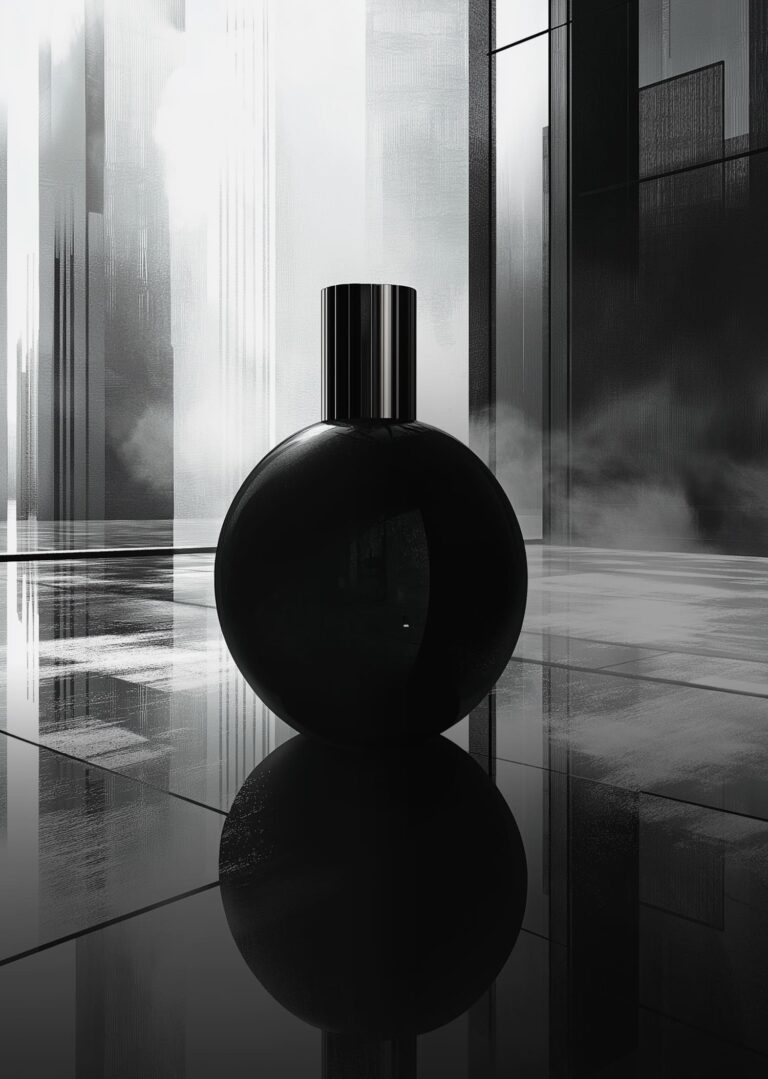Packaging and Luxury: is green the new black?
For over a century, black has been synonymous with elegance and sophistication. Reclaimed from the realm of mourning by Chanel in the 1920s with the introduction of the “little black dress,” it has become an inseparable symbol of luxury. From collections to packaging, black serves as a timeless safeguard against poor taste. But in an era of recyclability, black, which resists sorting systems, struggles to maintain its iconic status. And it is not alone in the hot seat: “noble” materials, composite packaging, metallic or glossy finishes, embossed prints, and multi-layered varnishes—these “luxury” touches are increasingly being asked to step aside for more sustainable alternatives. Can aesthetics and responsibility coexist harmoniously?
1
The recycling industry’s black hole
Traditional black pigments, made from carbon black, absorb the infrared light used by optical sorting equipment, sending the product directly to landfills—even when technically recyclable. This is a significant problem for the luxury sector: a single lipstick tube represents 20 to 35 grams of packaging for just 3 to 4 grams of usable product.
Moreover, this sorting problem isn’t limited to jet-black packaging. Colors like charcoal gray, aubergine purple, burgundy red, and forest green also risk escaping the system, adding to our mounting piles of waste in landfills and oceans.
2
Aesthetic? Yes. Recyclable? Not always.
Another major obstacle for sorting systems is the metallic and glossy finishes often used for brand logos or other decorative elements. These metallic coatings and reflective inks are also difficult to separate from the main material, interfering with the ability of recycling equipment to process them.
Additionally, luxury is often synonymous with intricate decorative details: embossed prints, ribbons, and symbolic ornaments. Brands use these features to stand out, enhance the premium feel of their products, and turn their packaging into objects of art and desire. Think of Chanel packaging without its iconic camellia, Hermès without its signature orange box, or a J’Adore perfume bottle without its golden collar. However, these decorations introduce extra complexity to recycling, often involving multiple materials. Adhesives used to affix these elements can also render recycling impossible.
While these aesthetic codes contribute to the image and prestige of luxury brands, consumer expectations are shifting. Clients of these high-end houses are placing increasing emphasis on environmental accountability. Furthermore, luxury brands, like all companies, face tightening regulations around eco-responsibility. In short, luxury will not escape the sustainability revolution.
3
Responsible and Chic: it’s possible
The best waste is the waste that is never created. Many brands have begun by reconsidering their packaging consumption, reducing it to the bare minimum. Dior, Mugler, Kilian, and Le Labo, for instance, have expanded their ranges of refillable products, from perfumes to cosmetics, simultaneously strengthening customer loyalty. At Mandarin Oriental hotels, disposable amenity bottles and tubes have been replaced by refillable dispensers. Panerai and Breitling now issue certificates of authenticity for their watches as digital passports secured by blockchain, reducing the size of packaging, which previously served as the sole proof of authenticity.
For packaging that cannot be eliminated, innovation is key. For example, black remains indispensable, but new detectable pigments offer credible alternatives to carbon black, with an estimated cost increase of 8 to 25% per package, according to Citeo. At LVMH, a bio-based plastic called Surlyn, made from used cooking oil, is set to replace all plastic packaging in the beauty ranges. Glass is also being rediscovered, as seen with Estée Lauder, which recently transitioned its entire Advanced Night Repair Serum line to glass bottles.
Opportunities for improvement also lie in the use of mono-materials and biodegradable materials, such as recycled paper or plant fibers. In 2020, Gucci made headlines by completely revamping its packaging with a green overhaul. Paper and cardboard now come from responsibly managed sources, are dyed throughout, and lack plastic coatings. Transport bag handles are made from 100% recycled polyester, tied instead of glued. Protective pouches are crafted from regenerated cotton, ribbons are made of organic cotton, and hangers are created from recycled polystyrene. This initiative has since spread across the Kering group (Gucci’s parent company), which published its eco-design packaging guidelines in early August 2024.
Although the luxury industry is embracing change, brands may eventually need to give up certain practices, such as over-packaging (bag + box + ribbon + tissue paper) or ornamental finishes that hinder recycling. Instead, they’ll adopt new standards better aligned with their clients’ and shareholders’ environmental objectives.
With its ability to innovate and unite ecosystems, luxury could once again become a model of excellence—this time leading other industries toward sustainability without losing its hallmark sophistication and uniqueness.
